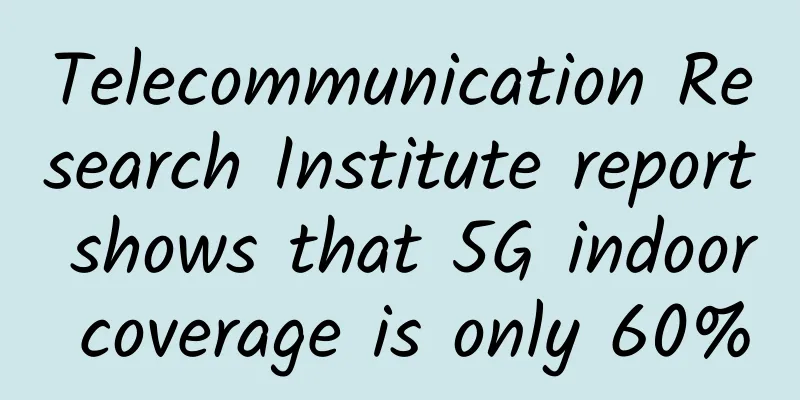In the 5G era, what sparks will cloud computing and 5G create?

|
With the eager anticipation of the whole nation, 5G finally made its debut. 5G will further activate a large number of cloud application scenarios in the smart society, such as Internet of Vehicles, smart factories, and telemedicine. The "heart" of cloud computing, relying on the deep integration of 5G technology and industry, is driving a huge change in the development mode of various industries. As China Telecom Chairman Ke Ruiwen said: "The 5G era is the era of cloud, and also the era of the integration of cloud and network. 5G accelerates the integration of cloud and network, and the integration of cloud and network gives 5G more connotations. The two will coexist and grow together, complement and promote each other." He said that China Telecom will actively promote 5G+ cloud transformation to create a new generation of all-cloud, all-optical intelligent network that is simple, agile, intensive, open and secure.
China Mobile also stated that it will continue to increase investment in R&D of cutting-edge cloud applications based on 5G technology and focus on partners in various industries to move forward on the cloud. China Unicom has formed a "network, cloud, and industry three-in-one development" model with MEC edge cloud as the anchor point. Its edge cloud business platform is enabling industry applications through pilot projects in multiple locations. It can be seen that 5G is the best opportunity and tool to fully introduce SDN/NFV and cloud computing to achieve network architecture reconstruction. Faced with the new 5G services within reach, what role will cloud computing play? Some experts pointed out that "5G is born in the cloud". So what is the connection between cloud computing and 5G? What fierce sparks will collide in the future? In the 5G era, cloud-network integration becomes the highlight Recently, the "2019 Cloud-Network Integration White Paper" released by the China Academy of Information and Communications Technology pointed out that in the 5G era, 5G network business capabilities, as the digital infrastructure of society, will play a greater role in promoting the digital transformation of various industries and the development of the digital economy. However, while it brings huge historical opportunities for network reconstruction and business transformation for operators, its technical barriers, operation and maintenance problems, and difficulty in expanding in the government and enterprise markets have also become the main challenges facing operators at the current stage. 5G technology has accelerated the development of intelligent applications, and massive amounts of data and applications require a secure and reliable cloud platform. Cloud-network integration can deeply integrate the capabilities of cloud computing and 5G, providing a more flexible network deployment method. When it comes to the relationship between 5G and cloud computing, the three major operators gave the answer as early as the embryonic stage of 5G. Zhang Zhihong, deputy general manager of the cloud computing center of China Mobile's government and enterprise branch, once pointed out that cloud computing is a strong support for 5G. Without the development of cloud computing, it would be difficult for 5G to achieve the goal of commercialization in 2020. In the 5G era, network speeds have increased dramatically, and the Internet of Everything has entered a new era of intelligence. Large amounts of data require powerful computing and storage capabilities. "There is no doubt that 5G is extremely beneficial to the development of cloud computing. Conversely, cloud computing also further promotes the development of 5G," said Hu Zhiqiang, general manager of China Telecom Cloud Computing Company. In summary, the industry generally believes that the combination of "cloud-network integration + 5G" will better support the development of vertical industries, evolve towards mobile-cloud integration and Internet of Things-cloud integration, accelerate industry applications, and promote the interconnection of all things. On the one hand, cloud-network integration lays a solid foundation for the development of 5G. The cloud-based deployment of 5G network elements requires rich and complete optical network resources and cloud/DC (data center) resources. Building an edge cloud architecture based on MEC is the key to the comprehensive cloudification of 5G networks. Therefore, 5G is naturally a communication technology built on cloud computing. Only the deep integration of cloud and network can promote the rapid and healthy development of 5G. On the other hand, the development of 5G promotes the deep integration of cloud and network. 5G has the characteristics of high speed, large capacity, low latency and comprehensive cloudification of the core network, which is an important driving force for the deep integration of cloud and network. For example, mMTC is one of the three major application scenarios of 5G. Its massive connections can correspond to applications with large connections such as the Internet of Things. Therefore, 5G and cloud computing must complement each other and develop in a coordinated manner. The “Cloudification” Strategy of the Three 5G Clouds In the 5G era, most users are concerned about the sense of gain and happiness brought by the technologically advanced 5G applications, 5G mobile phones and the prices of packages. Operators, however, are facing challenges such as business diversity, network agility and efficiency, and are more concerned about the cloud transformation of 5G. Wei Leping, executive deputy director of the Communications Science and Technology Committee of the Ministry of Industry and Information Technology and director of the Science and Technology Committee of China Telecom, once pointed out that "my country's 5G network deployment is no longer ahead in time. Only by adhering to high-quality development and focusing on the NSA/SA hybrid network mode based on SA based on 5GC (5G core network) + NR can 5G network deployment be realized." In the view of operator experts, in the 5G era, when the number of connected terminals is expected to exceed 100 billion and data is exploding, adopting a converged and open cloud infrastructure has become an inevitable choice for operators' digital transformation, and cloud deployment of 5G networks has become a consensus in the industry. "The commercial deployment of 5G must be cloud deployment, but how to deploy is the key." Wei Leping proposed a three-cloud deployment strategy. The "three-cloud" architecture meets the characteristics of future 5G networks, which are flexible, intelligent, converged and open. It is also built on the technical foundation of SDN/NFV and network cloudification. The "three clouds" include access cloud, control cloud and forwarding cloud. *** is to control the cloud first , because the separation of transmission and control is relatively mature and can be introduced first. In terms of NFV, decoupling is the first problem. At present, there are three ideas in the industry: no decoupling, software and hardware decoupling, and three-layer decoupling. Wei Leping said that the operator's goal is three-layer decoupling, but it involves vertical interoperability among multiple vendors, and the system integration and maintenance are difficult, and the deployment cycle is long. The actual deployment must be based on a series of conditions and the support of the industrial chain, and it must be a gradual transition. The second is to postpone the forwarding cloud. The forwarding cloud is based on a common basic resource hardware platform, which can realize the sinking of the user plane on demand and cache the hot content according to the cache strategy issued by the control cloud, thereby reducing service delays, reducing mobile network outbound traffic and improving user experience. However, through continuous analysis, the conditions are not met at present, and the forwarding performance is not ideal, so we need to continue to explore. The third is to accelerate cloud access. In order to speed up deployment, reduce costs and reduce latency, the initial stage will adopt a combined deployment of CU and DU, evolve to a three-layer classification based on business development, and build an edge cloud intelligent platform with MEC as the core. Based on this, cloudification not only needs to realize traditional IT cloudification and provide cloud services to the outside world, but also network cloudification. For example, Zhejiang Mobile recently announced the completion of commercial deployment and small-scale user verification of applications including fixed-line ringback tone services, one-machine dual-number services, and voice dialing verification backup capabilities on cloud networks. At the same time, its innovative three-layer decoupled operator commercial network was successfully built. In fact, this process is to test the feasibility and operability of network cloudification. Its essence is to introduce the core concept of cloud computing, reconstruct the network with DC as the center, make DC a part of the network, deeply integrate IT and CT, and build a full cloud network architecture with software decoupling, transmission and control separation, resource sharing, elastic scaling, and unified scheduling. MEC is the "killer feature" of 5G In the 5G era, one of the core development goals of operators is to enable the digitization of vertical industries and meet the network requirements of various application scenarios such as video surveillance, smart manufacturing, Internet of Vehicles, retail, and energy. The existing cloud platform architecture has limitations in massive data processing, network bandwidth from the network edge to the cloud data center, edge devices, and energy consumption. Therefore, it is an inevitable trend for 5G industry applications to be deployed in the edge cloud. "With the issuance of 5G commercial licenses and the popularization of pan-terminals, the trillion-dollar MEC market is about to explode." Ma Hongbing, general manager of the Operation and Maintenance Department of China Unicom Group, commented on the MEC market in the 5G era. From the perspective of business promotion, the value of MEC is mainly reflected in the support for the future edge cloud deployment of 5G services. MEC is called the "killer weapon" of 5G. 5G+MEC can migrate intensive computing tasks to the edge of the network, reducing the burden on the core network and transmission network, reducing network bandwidth pressure, realizing the characteristics of low latency and large bandwidth, quickly responding to user requests and improving user service quality, thereby improving the agility and economic benefits of the entire industry and releasing the huge energy of 5G. For example, in the field of consumer Internet, terminal computing will migrate to the cloud, which can significantly reduce the cost of terminal hardware, thus laying the foundation for the popularization of terminal products. In the field of Internet of Vehicles and wearable devices, since 5G will greatly improve response efficiency, these two fields will adopt edge cloud on a large scale in the 5G era. While enabling 5G, MEC has also become a new hotspot for competition among operators, cloud service providers, and equipment manufacturers. Leading cloud service companies rely on their first-mover advantage in cloud computing technology to continuously improve their computing and service capabilities, sink cloud technology to the edge, and vigorously develop edge computing; equipment manufacturers rely on their strong R&D capabilities to carry out edge computing practices with servers and network devices that are more suitable for edge computing scenarios; telecom operators have made efforts in MEC to meet the major market opportunities of 5G, and have fully deployed edge nodes to lay a solid foundation for the layout of the next generation of intelligent infrastructure. 5G+Cloud enables operators to have the ability to fly in the "cloud" and drive the "fog", and also allows cloud service providers to clarify the future development direction, and provides the "force" for 5G application scenarios in thousands of industries. |
<<: Wi-Fi 6 is here: These 12 questions will clarify it for you
Recommend
5G private network is a big watermelon (Part 3): Difficulty in synthesis
To some extent, 5G private network does not allow...
How to connect multiple Ethernet switches?
Ethernet is not a new technology as it has been u...
IDC: Global Enterprise WLAN Market Shows Moderate Decline in First Quarter of 2020
According to the results of IDC's global quar...
ExtraVM 30% off, AMD Ryzen+NVMe+1Gbps unlimited traffic, multiple computer rooms in Los Angeles and other places
ExtraVM recently launched a promotion on WHT, off...
In the post-epidemic era, what is the effect of 5G infrastructure investment?
[[378112]] Looking back at 2020, "5G" m...
"No products, no discounts, no sales" Huawei's new "knowledgeable" approach
Not long ago, an online experience store with &qu...
F5: User-oriented, solving the complexity of multi-cloud environment
The fourth industrial revolution led by digital t...
15% off on KVMLA dedicated servers, starting from 765 yuan per month for Japan/Singapore servers, top up 500 yuan and get 100 yuan free
In addition to the VPS hosting discount, KVMLA al...
How can operators break the curse of the “scissors gap” between volume and revenue?
[[180644]] The "Economic Operation of the Co...
By 2027, global 5G IoT roaming connections will reach 142 million
A study conducted by Juniper Research reveals pro...
Wu Hequan, academician of the Chinese Academy of Engineering: 5G technology is very immature and the operating costs are extremely high
According to domestic media reports, on October 1...
5G, 6G and immersive technologies: Unlocking a better future through hyperautomation
As the world becomes increasingly connected and t...
What else will we look forward to in the communications industry in 2023?
Hello everyone, I am Xiaozaojun. The joyful and ...
Asia Cloud: CN2 GIA cloud servers in the United States/Japan/Hong Kong starting from 24 yuan/month, with optional data centers in Shenzhen/Guangzhou/Fuzhou/Shiyan, etc.
AsiaYun is a domestic business founded in 2018. I...
What changes will the integration of 5G and the Internet of Things bring?
The convergence of 5G and the Internet of Things ...
![[Black Friday] CMIVPS: 50% off on all VPS annual payments, 30% off on top-up](/upload/images/67cac0188d8e5.webp)








